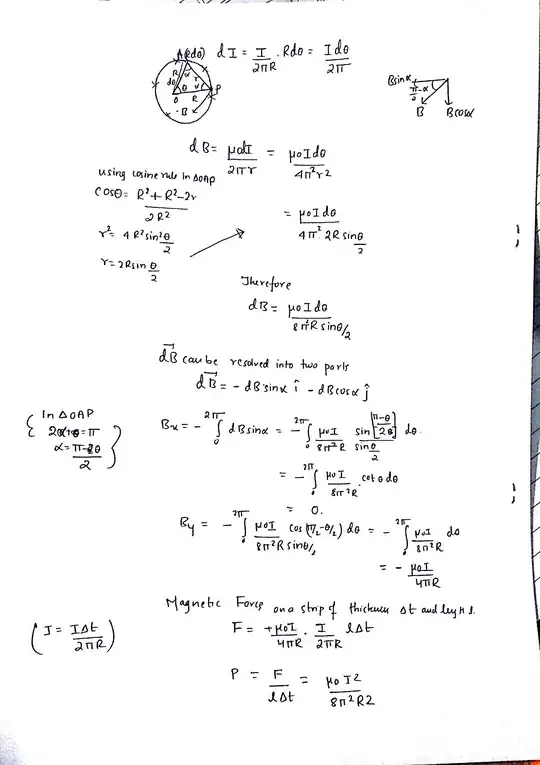A current $I$ flows in a long thin walled cylinder(parallel to the axis) of radius $R$. What pressure do the walls experience?
This is the 263rd problem in Section III from the book 'Problems In General Physics by IE Irodov'.
My attempt:
Consider a thin segment of the cylinder parallel to the axis of thickness $Rd\theta$(i.e. subtends $d\theta$ at the center). As the current is uniform, the current in this segment will be $$dI = I\frac{d\theta}{2\pi}$$ The magnetic field $B$ near this segment will be $$B=\frac{\mu_0 I}{2\pi R}$$
Force on a length $l$ of this segment will be $$F=BIl=\frac{\mu_0 I}{2\pi R} I\frac{d\theta}{2\pi} l=\frac{\mu_0I^2ld\theta}{4\pi^2R}$$ Pressure will be $$P=\frac{F}{A}=\frac F{lRd\theta}=\frac{\mu_0I^2}{4\pi^2R^2}$$
The answer given in the book is $$\frac{\mu_0I^2}{8\pi^2R^2}$$
There are two problems after this also asking to find the pressure due to magnetic forces, in which my answer differs from the actual answer by a factor of $\frac 12$, just like above. Is there something I am missing in my understanding of pressure?
